Israel Chemicals Ltd(ICL-N)NYSE
Fertilizers Will Continue to Put Upward Pressure on Food Prices- MOO Provides Exposure
A fertilizer is any material of natural or synthetic origin that is applied to soil or to plant tissues to supply nutrients. Fertilizers are critical for the global food supply and contain essential plant nutrients, including nitrogen, potassium, and phosphorus.
While fertilizer and commodity prices had risen since the 2020 pandemic-inspired lows, they took off on the upside in early 2022. Inflation and supply chain bottlenecks were initially reasons for rising costs, but the war in Ukraine caused supply fears that continue in August 2022.
The VanEck Agribusiness ETF product (MOO) holds shares in agriculture-related businesses, including fertilizer manufacturers. The events in Eastern Europe have caused prices and profits for fertilizer manufacturers to soar.
Russia is the world’s leading fertilizer exporting country
The world’s top nitrogen fertilizer producing countries over the past years have been:
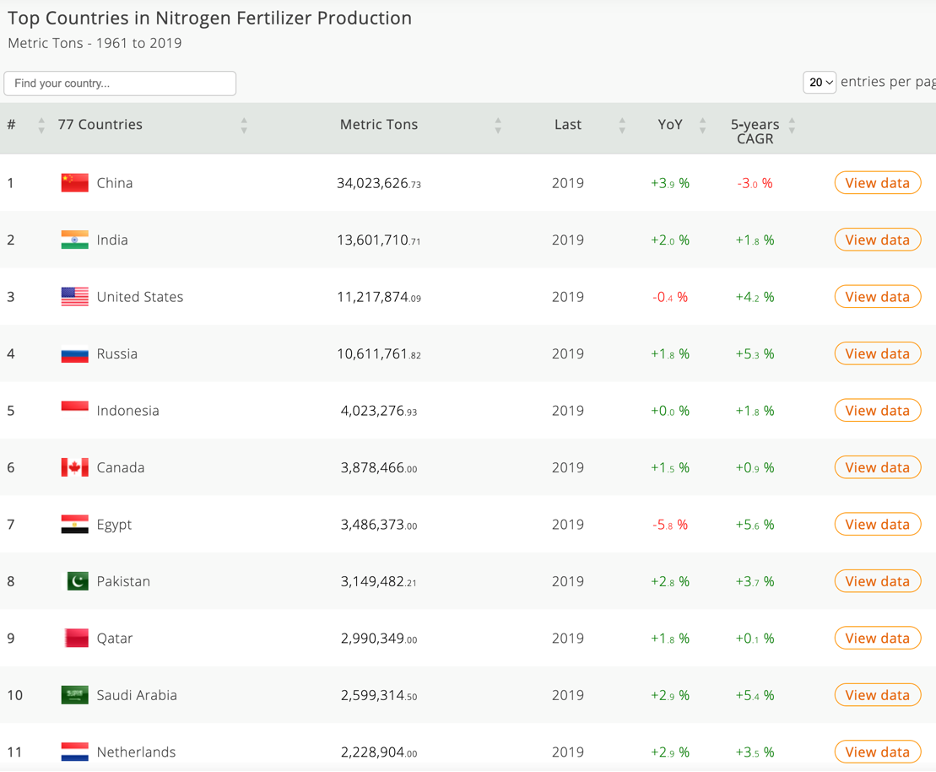
Source: Nationmaster.com
While Russia has been the fourth top producer, the country leads the world in exports:
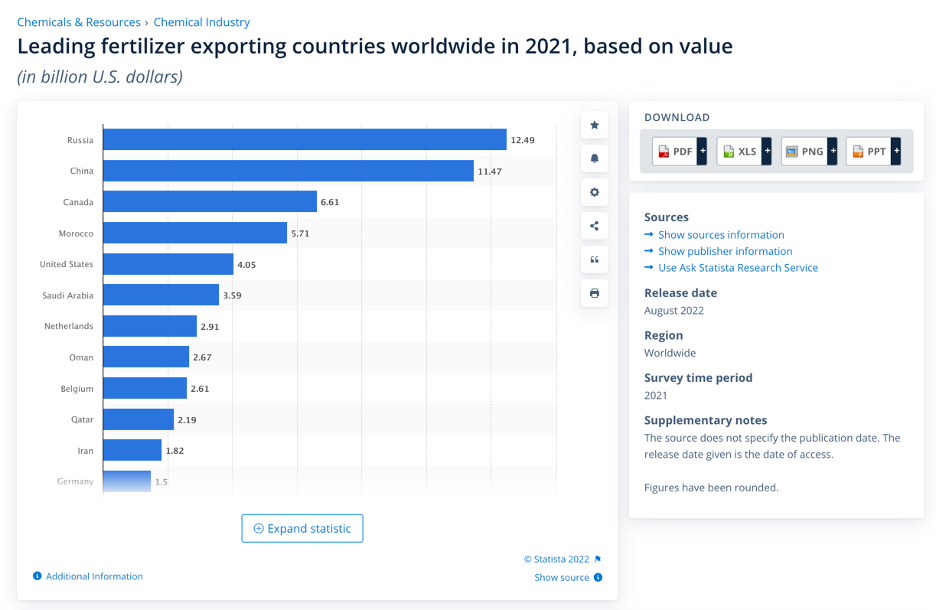
Source: Statista.com
The chart shows that Russia and China lead the world in exports, and together they exported more than 41.5% of the top ten producing countries.
The war in Ukraine and other factors are creating shortages
On February 4, 2022, Chinese President Xi and Russian leader Vladimir Putin shook hands on a “no-limits” alliance. On February 24, Russian troops invaded Ukraine as Russia considers the country part of western Russia. Meanwhile, Europe and the US believe Ukraine is a sovereign country in Eastern Europe and support Ukraine’s independence. Sanction on Russia and Russian retaliation have caused fertilizer prices to skyrocket over the past months. The US is the world’s leading producer and exporter of corn and soybeans and a significant exporter of wheat. European countries are also agricultural producers, and fertilizers are critical inputs. Given the strategic importance of fertilizers, Russia’s exports to “unfriendly” countries will likely decline.
Meanwhile, tensions between the US and China over the Speaker of the House’s recent trip to Taiwan could further curtail fertilizer supplies.
The leading fertilizer-producing companies
The leading companies that produce and manufacture fertilizers are:
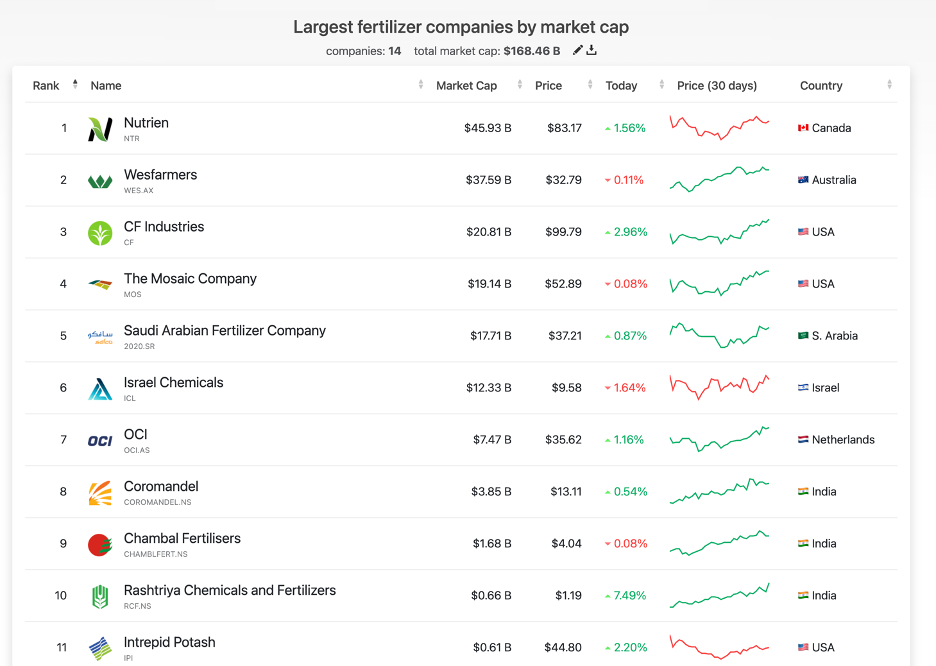
Source: Companiesmarketcap.com
Nutrien Ltd. (NTR), CF Industries (CF), The Mosaic Company (MOS), and Israel Chemicals (ICL) account for over 58% of the market cap of the leading fourteen fertilizer companies.
Farmers’ input costs have exploded higher, and supply concerns continue to threaten future crops
Fertilizers are only one of the many rising expenses facing farmers in 2022. Labor, land, financing, equipment and other costs have soared as inflation has pushed prices higher. The rising costs have caused crop prices to climb to multi-year and, in some cases, all-time highs in 2022.
New-crop corn and soybean prices were above $6 and $14 per bushel on August 5. Nearby corn futures had risen to a high of $8.27 per bushel in April 2022, and nearby soybean futures peaked at $17.84 per bushel in June. Nearby CBOT soft red winter wheat futures, the most liquid contract, and the global benchmark hit a record $14.2525 per bushel high in March 2022.
Aside from the high prices, fertilizer shortages and the war in Europe’s breadbasket in Ukraine and Russia threaten the global food supplies. While most consumers will pay higher costs for essential food, starvation could be on the horizon in some regions.
MOO is a diversified product with fertilizer exposure
There is no liquid futures market for fertilizers, but the leading producing companies offer exposure to the sector. As the prices rise, profits for the companies that manufacture the products that provide nutrients for soil have soared.
The top holdings of the VanEck Agribusiness ETF product (MOO) include:
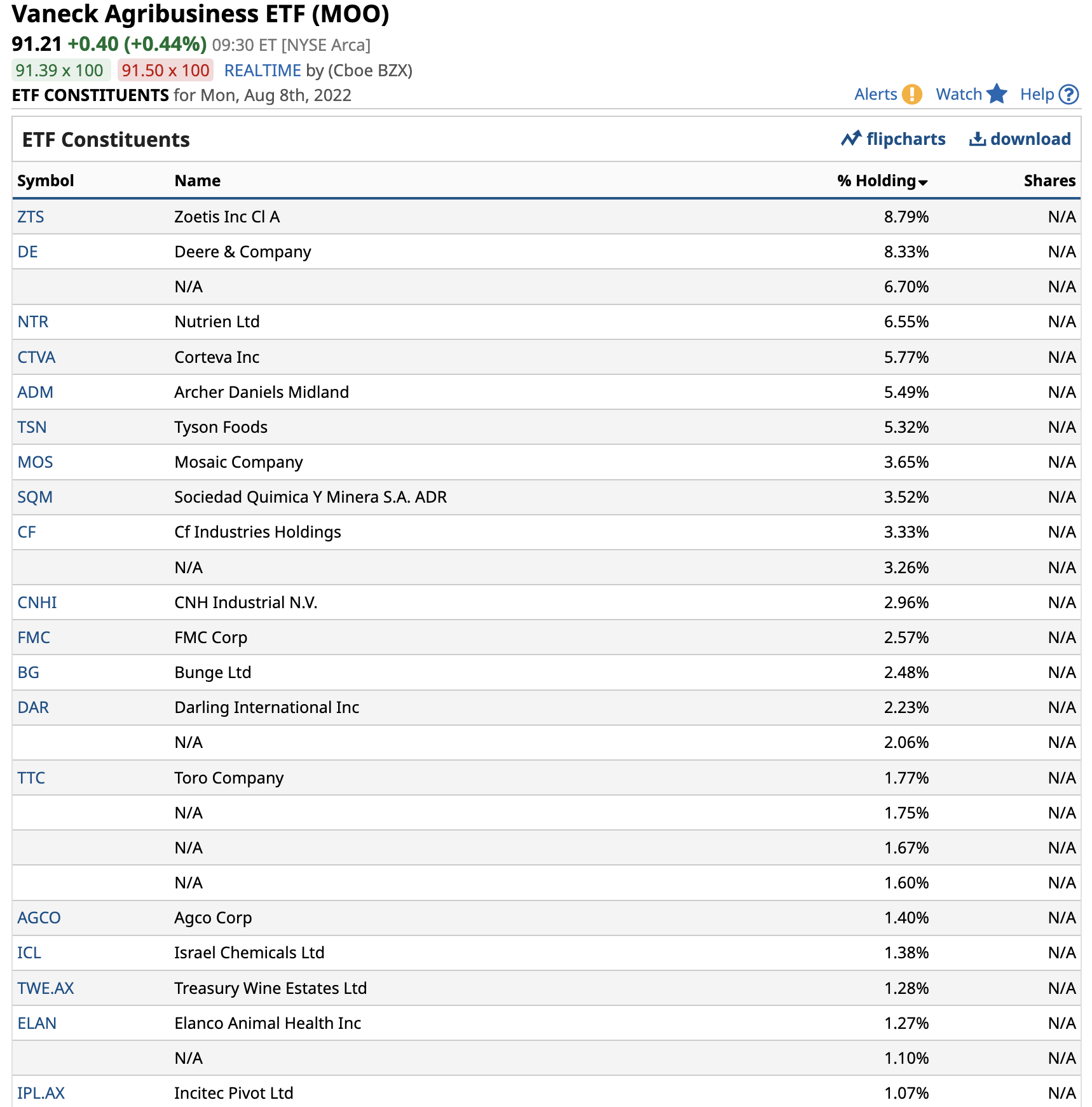
The chart shows MOO has a 14.91% exposure to NTR, MOS, CF, and ICL. The ETF also holds shares in the leading agricultural and agriculture-related companies that trade in the stock market.
MOO is a highly liquid ETF product. At the $91.20 per share level on August 8, MOO had over $1.584 billion in assets under management. The ETF trades an average of 180,038 shares daily and charges a 0.52% management fee. While the leading stock market indices have declined in 2022, MOO has outperformed the overall market. The S&P 500 was 13% lower from the end of 2021 on August 5, 2022. However, the most diversified stock market index was still over 89% higher than the March 2020 low.
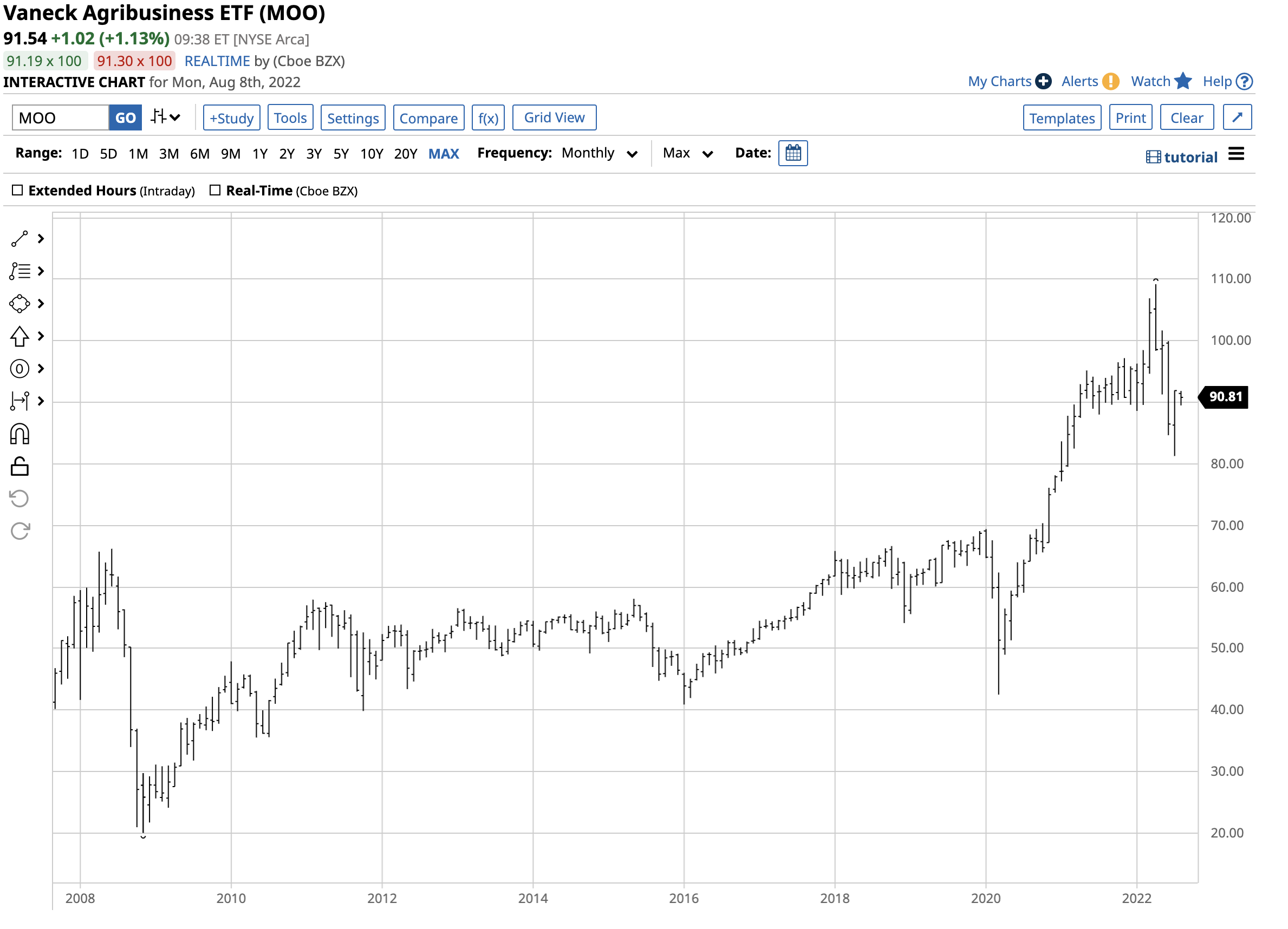
The chart shows the MOO ETF declined from $95.42 on December 31, 2021, to $90.81 on August 5, or 4.8%. In March 2020, MOO reached a low of $42.52 per share. The ETF more than doubled, rising by over 113.5% since the pandemic-inspired bottom.
MOO has outperformed the S&P 500 in 2022 and since early 2020. Rising agricultural prices and trade issues impacting the global fertilizer market will likely support the MOO ETF over the coming months and years.
The bottom line is consumers worldwide will be paying more for food, while some may experience severe shortages.
More Food & Beverage News from Barchart

Provided Content: Content provided by Barchart. The Globe and Mail was not involved, and material was not reviewed prior to publication.